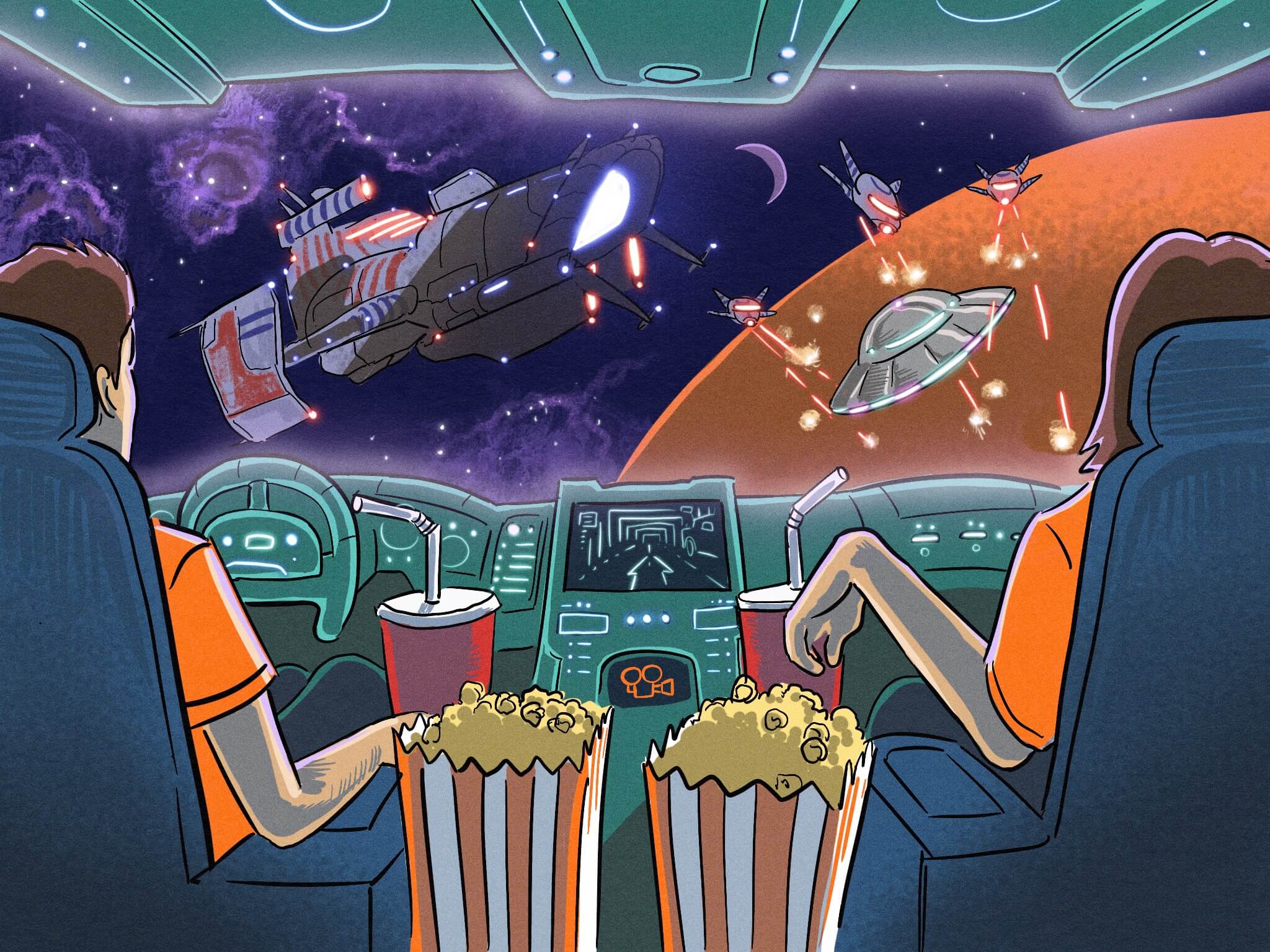Mobile theatres

The tech industry continues to deliver more efficient ways for consumers to complete everyday activities. Emerging technologies are reinventing the way everyday tasks are completed, from Snap’s (NYSE: SNAP) innovative Pixy drone camera to John Deere’s (NYSE: DE) fully autonomous tractors. The quest to enhance every aspect of human life is ever-evolving. Even the tradition of drive-in movie theatres has been reinvented and returning in the form of mobile theatres that do not actually require a movie venue.
Bayerische Motoren Werke (BATS EU: BMW) revealed its new in-car technology, the theatre Screen, a 31-inch display which will descend from the ceiling of its luxury cars, transforming the rear passenger cabin into a private mobile cinema with 5G streaming capabilities. BMW (BATS EU: BMW) aimed to enhance its rider’s experience and did not stop short of including a 4D surround sound system from Masimo’s (NASDAQ: MASI) Bowers & Wilkins brand, perfect for delivering an immersive experience. BMW went the extra mile to improve the experience, stating that as the screen descends, so do the sun blinds for the side windows, while the ambient lighting in the rear of the vehicle dims down, creating the perfect atmosphere for watching a movie while on the go.
The potential these new innovations bring to the auto industry is endless. Car manufacturer Audi – Volkswagen AG (BATS EU: VOW3) seeks to go a step further with its self-driving concept car, which not only features individual screens for its passengers and exclusive sound zones but also the revolutionary DML headlights, which are no different than the concept of a projector integrated into headlights. Although this technology is still in its infancy phases, there is no doubt newer features will soon emerge. Currently, the DML headlights do not display images in colour but rather, upon entry and exit of the vehicle, it projects animations on the surface in the front of the car.
Perhaps we will see these headlights engineered to especially illuminate the GPS route ahead. Just imagine how much easier and safer vehicular navigation would be. In 2019, The National Highway Traffic Safety Administration reported that 3,142 people were killed in car accidents due to driver distractions, with GPS usage being the main attributor. “GPS systems cause over 200,000 accidents every year in the U.S. These accidents are a result of inaccurate navigation maps, incorrect directions, wrong locations, and distracted driving.”, according to StromLawyers.com. With the further emergence of DML headlight technology, distractions would most likely decrease, giving motorists one less thing to manage while driving.
There may even be a future possibility of projecting recordings of previous drives to simulate a driving experience. Companies like Tesla (NASDAQ: TSLA) are already collecting copious amounts of data about their drivers from their vehicles; why not put that to use to enhance the transportation experience. How convenient would it be to screen the journey of last year’s trip from your car’s vantage point? The sites you didn’t have time to experience are captured by your car for your potential viewing. Envision the ease with which first-time drivers would be able to maneuver as well as witness where they could improve from utilizing this technology.
The backdrop of a city building will soon be the new movie venue for a night out with friends. In recent times art and technology have presented some of the most amazing collaborations and ‘Projection Mapping’ is one of them. This is when artists like Ryan Uzilevsky of Light Harvest Studio use buildings as their canvases and project digital light shows onto the structures. However, this can be an extremely expensive undertaking so imagine the affordability, convenience, and ease DML headlights would offer by using a car instead.
Gone are the days when we must choose between luxury and the outdoors if “Glamping” was any indication. A tarp strung between trees makes for a premier screen for campers as they watch movies and roast their marshmallows. This would allow for yet another way to enjoy the comforts, except now it will be beneath the stars and facilitated by a vehicle. Simply put, the possibilities would be undoubtedly limitless for the tech of this sort.
Ultimately, this kind of technology could not only influence an insurgence of mobile theatres but will impact many other facets of drivers and passengers alike, piloting, automobile experience and even their social lives. Why stop there, though? Therefore, it’s safe to assume it’ll not only continue to advance but predictably be replicated by other manufacturers in short order. Similarly, although it’s easy to try reducing the further implementation of mobile theatres to concepts like nostalgia, we must also consider current and impending economic factors which have undeniable effects.
It seems” drive-in” theatres, just like everything else, are poised to make a resurgence with the help of new technology. When Drive-in architect Richard Milton Hollingshead Jr said on his patent application, “My invention relates to a new and useful outdoor theatre…whereby the transportation facilities to and from the theatre are made to constitute an element of the seating facilities.” never could he have envisioned progress of this magnitude. From then to now, the advancement of his design has allowed for the facilitator to become the facility, with automobiles becoming the actual theatre. Now, this is what we call evolution.
